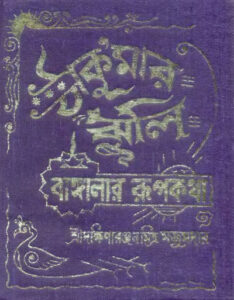
Folktales form an integral part for the creation of perspectives, mainly inspired by the oral narratives transmitted for generations. Bengal is known for its literary culture and the use of intelligence as a medium to conserve its heritage through literature and historical events. However, what the majority fails to cover is the transmission of oral narratives through various forms such as storytelling and songs. ‘Thakurmar Jhuli’, a familiar name in the Bengali household, can be considered one such example. This article examines the background and context, the cultural symbolisms hidden behind the stories of Thakurmar Jhuli, and analyzes the stories to understand the meaning, along with their relevance in the present society.
Background and Context
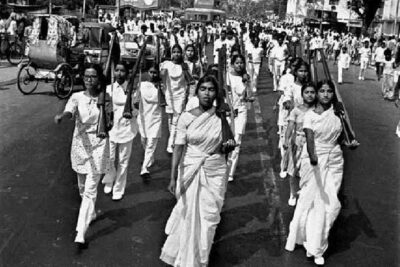
Thakurmar Jhuli (Grandmother’s Bag of Tales), composed by Dakshinaranjan Mitra Majumder, shares its origin with the 1907 Swadeshi movement in Bengal. The movement was believed to have inspired D.M. Majumdar as he introduced a series of indigenous versions of the Western fairytales. Embraced by the Bengali audience, especially by the intellectual classes, the work soon became one of the most important literary creations in history. It highlighted various socio-cultural aspects, along with the ethnology, politics, and economic background of the society, through its symbolic meanings, which led to the awakening of the masses. The entertaining stories, mainly concealed with fantasy and magic, revolved around heroic ideals based on the national movements, targeting both young audiences and older generations simultaneously.
Structure of the Book
Thakurmar Jhuli, as a series, contains 14 stories and can be classified into four distinct categories:
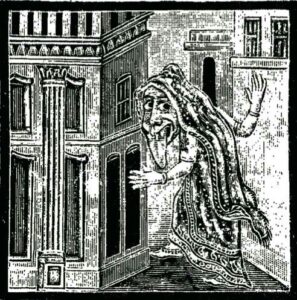
Dudh Sagar (Tales of Adventure): Contains the stories of Kalabati Rajkanya (Princess Kalabati), Ghumanto Puri (The Sleeping Town), Saat Bhai Champa (the Seven Brothers of Champa), and Kiranmala. They depict characters initially suffering from tragedy but eventually gaining fortunes, with their qualities such as courage, kindness, and wisdom leading to success.
Roop Tarashi (Tales of Demons): One of the famous stories from this section is Lalkamal Neelkamal. The stories show the encounter between human protagonists and alien creatures such as ‘Rakkhosh” (the demon) and magical snakes. A Rakkhosh, derived from Hindu mythology, is a creature with magical abilities, changing forms, and a nature of eating humans. Animals and birds are also depicted in this section. For instance, Byangoma (birds with human faces) are seen in the story of Lalkamal Neelkamal.
Chang Bang (Animals and Humorous Tales): This section contains miscellaneous stories and humorous features depicted through animal characters. One of the famous stories is the story of Sheyal Pandit (The Fox Master), mainly known for his cunning attributes and witty qualities.
Aam Sandesh (Section of Poems): Being the final section, it contains three poems known mainly for putting the children to sleep at the end of stories.
Themes covered in Thakurmar Jhuli
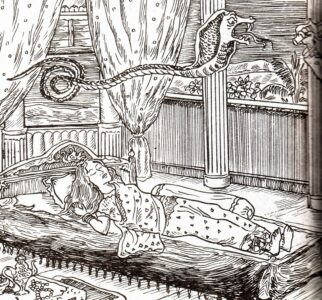
Indigenous Versions of Western Fairy Tales: As part of the Swadeshi movement, D.M. Majumder attempted to create Indian versions of European stories to express realities through the medium of fantasy. For instance, the story of Ghumanto Puri is a Bengali translation of Sleeping Beauty, and Der Anguley is a translation of Thumbelina, as are the European versions.
Chhara tradition: The writing of Thakurmar Jhuli also follows a Chhara style in which the poems serve as the main narration of important events and incidents related to the plot to intensify the audience’s experience. The story of Brahman-Brahmoni exemplifies Chhara as the foolish Brahmin Pandit, who, with the help of his clever wife, saves himself from the king’s punishment by locating a local thief in the king’s palace. The story conveys a message of proper use of the mind in need, through which the Chhara explains the plot with a simple yet expressive language.
The Wise Old Woman: Thakurma (Grandma) is used as a metaphor for wisdom. The author attempts to transmit the wisdom from the older generation to the younger generation through the narration of stories, mainly targeted for children but appreciated by adults as well for hidden symbolisms.
Mythical Creatures: Themes such as Rakhshas (demons) and Nagas (snake beings) are also explored to bring out the fantasy part of the stories.
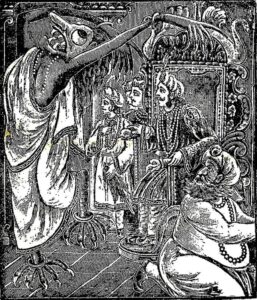
Moral Education: These stories also attempt to convey messages of moral virtues such as courage, honesty, and kindness, mainly for children.
Narration by Women: Based on rural Bengal, Thakurmar Jhuli attempts to reflect the beliefs and feelings of women in these areas. The narratives reflected the rural women’s desire to gain a position of power in the royal family. In the story of Kironmala, for instance, the main character, Kironmala, is depicted as a bold and fearless princess who searches for her lost brothers and challenges the men who failed her in society, depicting a plot for the victory of good over evil.

The stories also depicted the everyday struggles of the regular women householders. For instance, in the Brahmon-Brahmini story, goddess Sasthi gave the blessing of carrying a child to the Brahmin wife by instructing her to eat a certain type of cucumber. Therefore, the cucumber here simply represented the familiarity with everyday goods used for running the household.
Beauty of Women: The beauty of women is also emphasized with predetermined standards set by society. In Kalavati Rajkanya, for instance, the phrase “Kunch Baran Kanya Taar Meghe Bran Chul” (a woman with a complexion similar to kaunch fruit and dark hair compared to rain clouds) exemplifies the standards of beauty kept for the character.
Nature as a character: The trees and animals also played a vital role in demonstrating the psychological conflicts regarding the relationship between humans and the alien creatures in a non-urban scenario.

Children as the targeted listeners: As women narrate, children are kept as the target audience to transmit the wisdom and simplified version of narratives from the older generation to the younger generation. Therefore, a clear decoding of moral lessons becomes essential in this regard. The main themes of moral education revolve around honesty, courage, and wisdom. For instance, the story of Sheyal Pandit shows the need for cleverness to survive in a cruel world of fake individuals.
The Lower-Class Struggle to Bravery: In the narrations, another common theme found is the struggle of the lower class to gain their deserved fortune or position in society. For instance, in Neelkamal Lalkamal, the good-against-evil plot and the act of unity with the siblings and relatives during danger are emphasized. Interestingly, stories like Dalim Kumar, Neelkamal Lalkamal, Kalavati Rajkanya, and Saat Bhai Champa also emphasize the harmony with step-siblings and unity based on family relations.
The Relevance of Thakurmar Jhuli in Today’s Generation

Thakurmar Jhuli, as a fairytale, brings many aspects to the table that hold relevance even today. It became an integral part of our literary heritage, connecting individuals with their cultural identities. It also highlights the richness of Bengali as a language, along with making the learning of vocabulary much more interesting for children. With deep symbolism, considered as hidden treasures, the narrations try to embed moral and ethical lessons, which become essential for both adults and children of every generation. Through the use of fantasy as a medium, a vision is created among young minds to teach them skills such as critical and innovative thinking.
Thakurmar Jhuli: A Learning Process
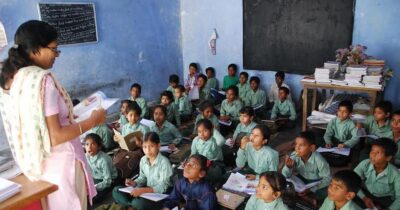
The stories of Thakurmar Jhuli can be taught in primary education as a part of the school curriculum. Young minds can learn skills such as emotional intelligence, problem-solving, the idea of vision, and innovation through creativity, along with gaining environmental awareness. From a cultural perspective, these tales help in creating more awareness about the society of rural Bengal and the political, economic, and sociological standards set by it.
Topics such as triumph over evil and gaining fortune also give us hope for a better future. The variation of characters in Thakurmar Jhuli also shows us the diverse nature of our landscape, exposing us to awareness and empathy. Therefore, an urgent need for the inclusion of folktales in educational curricula is observed to trace individuals to their lost indigenous roots.
Pop Cultural References

In modern media, alongside being a part of primary education, Thakurmar Jhuli can create an impact to increase the popularity of folktales among the younger generations. For instance, series such as ‘Saat Bhai Champa’ in Zee Bangla, along with ‘Thakurmar Jhuli’ and ‘Kironmala’ in Star Jalsha, attempt to create awareness among the audience. The narration of Thakurmar Jhuli’s stories on the radio every Sunday morning also attempts to create the same. With audio-visual presentations such as cartoons and animated movies, the stories can easily influence the young minds in a positive direction.
Conclusion

Thakurmar Jhuli, as a folktale, attempts to bring the socio-cultural aspects of the Bengal society in front of common people, irrespective of background and age. What makes this work unique is the use of fantasy themes to convey the messages of morals and ethics to the audience. As it crossed over a century, these stories remain relevant in the modern generation as well. Though this literary treasure is now on the verge of decline with the coming of social media and OTT platforms, modern mass media attempts to bring the stories into light through television shows and radio. These tales are also recommended as compatible with primary education by experts. Therefore, the legacy of D.M. Majumdar and Thakurmar Jhuli remains eternal, creating cultural awareness in the diverse landscape of Bengal, respectively.
References
Background and Context of Thakurmar Jhuli: https://indianculture.gov.in/digital-district-repository/district-repository/thakurmar-jhuli-dakshinaranjan-mitra-majumdar#:~:text=The%20Swadeshi%20Movement%20had%20a,1907)%20by%20Dakkhinaranjan%20Mitra%20Majumder.
Kar Sankar, Unveiling the Enigmatic World of Moral Teachings: A profound Exploration of ‘Thakurmar Jhuli’ Folk tales and Folk songs in primary education, Swar Sindhu: National Peer-Reviewed/Refereed Journal of Music A UGC CARE listed Journal, ISSN 2320–7175 (O) | Volume 12, Issue 01, January-June, 2024. https://swarsindhu.pratibha-spandan.org/wp-content/uploads/v12i01a70.pdf
Moitra Lopamudra, 100 Years of Thakurmar Jhuli (Grandmother’s Bag of Tales): From Oral Literature to Digital Media – Shaping Thoughts for the Young and Old, Indian Folklore Research Journal, Volume 4, No. 7, December 2007. https://citeseerx.ist.psu.edu/document?repid=rep1&type=pdf&doi=a791fd308d9a4325a67f4ec5d737bd0c64e50ab8
Dutta Moumita, Magic Meets Mundaneness: A Re-reading of Thakurmar Jhuli, The Criterion: An International Journal in English Vol. 8, Issue-III, June 2017 ISSN: 0976-8165. https://www.the-criterion.com/V8/n3/IN27.pdf
Sen Sudarshana, Thakurmar Jhuli: Recasting the Grandmother’s Bag of Tales, Social Trends, Journal of the Department of Sociology of North Bengal University Vol. 6, ISSN: 2348-6538, 31 March 2019. https://ir.nbu.ac.in/server/api/core/bitstreams/8408dcf2-8a12-4116-9ebb-4253f7c3ce0f/content
Structure and Contents of Thakurmar Jhuli: https://en.wikipedia.org/wiki/Thakurmar_Jhuli#:~:text=The%20book%20contains%20fourteen%20stories,well%20as%20eating%20humans%2C%20sometimes.




